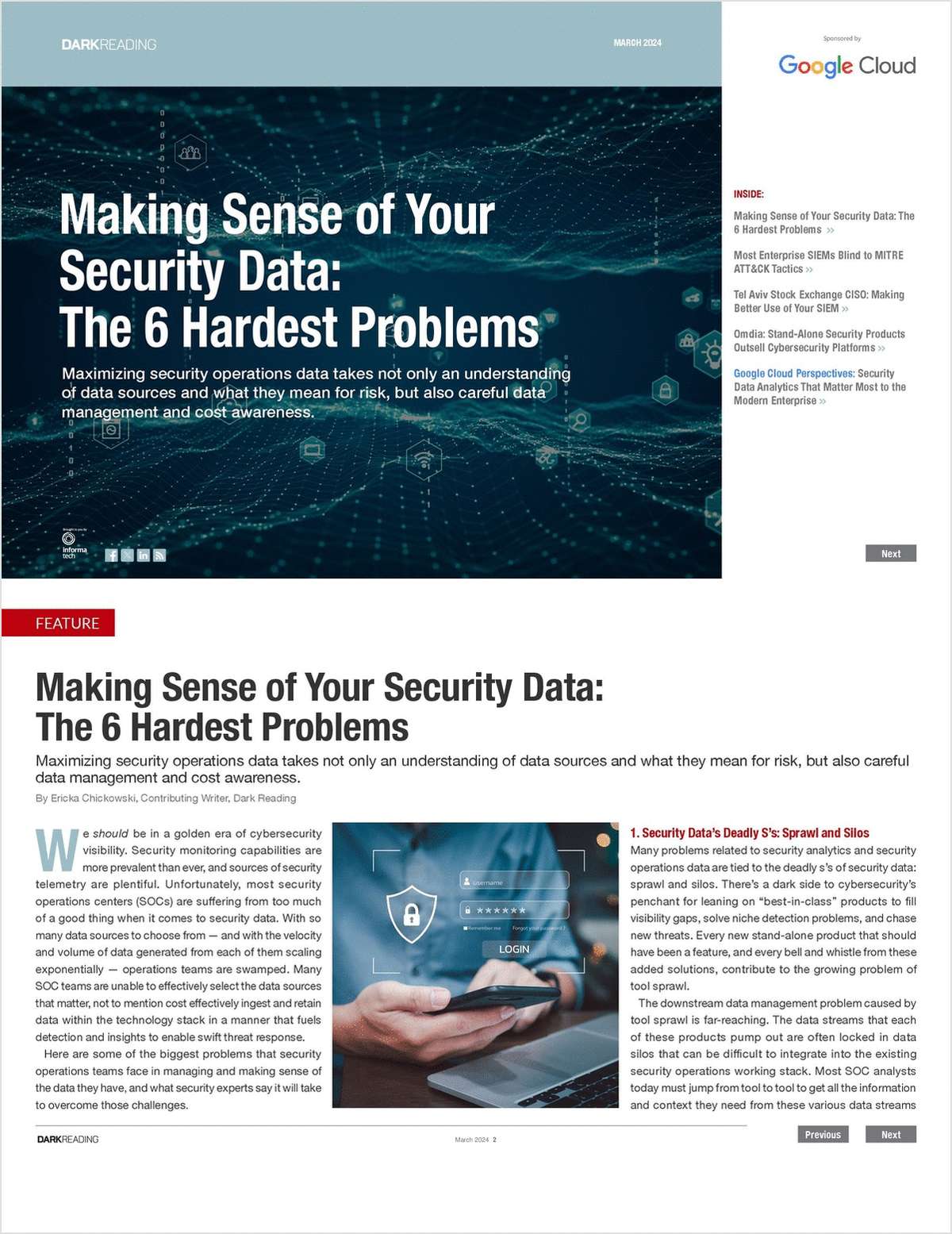Request Your Free Report Now:
"Making Sense of Your Security Data: The 6 Hardest Problems"
Maximizing security operations data takes not only an understanding of data sources and what they mean for risk, but also careful data management and cost awareness. Security data is typically siloed and it's also extremely diverse and varying in quality. Security operations personnel have to perform deep analysis and thoroughly understand data's context to use it effectively. The data integration and analysis issues that crop up from data silos demand a lot of strategic and tactical planning.
We should be in a golden era of cybersecurity visibility. Security monitoring capabilities are more prevalent than ever, and sources of security telemetry are plentiful. Unfortunately, most security operations centers (SOCs) are suffering from too much of a good thing when it comes to security data. With so many data sources to choose from — and with the velocity and volume of data generated from each of them scaling exponentially — operations teams are swamped. Many SOC teams are unable to effectively select the data sources that matter, not to mention cost effectively ingest and retain data within the technology stack in a manner that fuels detection and insights to enable swift threat response.
Many problems related to security analytics and security operations data are tied to the deadly s’s of security data: sprawl and silos. There’s a dark side to cybersecurity’s penchant for leaning on “best-in-class” products to fill visibility gaps, solve niche detection problems, and chase new threats. Every new stand-alone product that should have been a feature, and every bell and whistle from these added solutions, contribute to the growing problem of tool sprawl.
The downstream data management problem caused by tool sprawl is far-reaching. The data streams that each
of these products pump out are often locked in data silos that can be difficult to integrate into the existing
security operations working stack. Most SOC analysts today must jump from tool to tool to get all the information and context they need from these various data streams
The combination of data integration and analysis issues that crop up from tool sprawl and data silos demands a lot of strategic and tactical planning from security leaders. The first step is getting more disciplined and selective about what tools the SOC puts on its road map, laser-focusing on data compatibility and integration with the existing stack. Many CISOs pair discipline in their selection process with a drive to consolidate tools or migrate to platforms to minimize sprawl and data silos.
This report discusses the challenges and strategies of mitigating the following challenges:
- Sprawl and silos
- Managing data in SIEMs and compute limitations
- Data architecture
- Data quality
- Data selection
- Limited data science skills
Also in this Tech Insight:
- The limitations of the SIEM: Organizations are largely deluded about their own security postures, according to an analysis, with the average SIEM failing to detect a whopping 76% of attacker TTPs.
- How a CISO uses the SIEM: If rule writing for SIEMs isn’t managed properly, it can lead to false positives and misconfigurations, which create extra work for the SOC team.
- Omdia research says companies are looking for stand-alone security products, not platforms.
Offered Free by: Google Cloud
See All Resources from: Google Cloud






